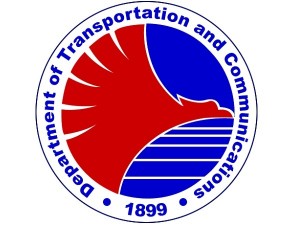DoTC lists priority projects for PPP
The government plans to bid out a contract to extend southwards the Light Railway Transit-1 from Baclaran to Cavite by March or April this year, adding a crucial mass transportation project worth around P45 billion to this year’s pipeline of public-private partnership (PPP) infrastructure projects.
The LRT-1 project is among the big-ticket infrastructure projects to be contributed by the Department of Transportation and Communications (DoTC) to the much-awaited PPP agenda apart from large-scale projects to be funded by the government itself to help pump-prime the economy, Transportation Secretary Mar Roxas said in a briefing Monday.
The DoTC is also fast-tracking the construction of a modern international airport in Puerto Princesa, Palawan, to accommodate an increased influx of tourists following the inclusion of the Underground River among the world’s “New Seven Wonders of Nature.” The P4.46-billion project will be funded using bilateral assistance from South Korea. The bidding for the construction of the airport will be held in the third quarter of the year.
Other big-ticket infrastructure projects under DoTC’s responsibility that investors hope to see auctioned this year are the Laguindingan Airport operation and maintenance ($34.9 million), automatic fare collection system for LRT ($7 million), Mactan-Cebu airport new terminal development ($180 million), construction of a new Bohol airport ($158 million) and LRT-2 east extension ($206 million).
Those are indeed the “PPP examples,” Roxas said, adding that other projects could also be added to the pipeline, such as the rehabilitation of Sasa Port in Davao and the passenger terminal buildings in Tacloban and Cebu.
Roxas said the blueprint for LRT-1 is now with the National Economic and Development Authority and likely to hurdle approvals soon. He added that the government was now working on the terms of reference and might be able to bid out the PPP project for the design and construction of the railway expansion to Cavite.
The vision is to harness private sector money to build the railway extension with the help of land right-of-way acquired by the government, which will separately procure the additional fleet that will run on the expanded railway.
“Subsequently, the government, through ODA [official development assistance], will then bid out the rolling stock and once that’s completed, it will be added to the inventory of vehicles that will ply the route,” Roxas said.
“Whoever wins the design and construction contract will also win the O&M [operation and maintenance] of the entire 28-kilometer railway,” he said.
LRT-1, the oldest elevated railway in the metropolis, runs a 16-kilometer stretch from Monumento to Baclaran, while the expansion will involve an additional 12 kilometers to reach Cavite. Overall, the LRT-1 rehabilitation, including the acquisition of new fleet, will cost P80 billion, of which the railway construction alone will cost P45 billion.
Roxas said the country’s railways would soon be rebranded to follow a color scheme, adopting popular global practice and thus making it easier for tourists and first-time passengers to use the mass transportation system. LRT-1 will be known as the “green line,” LRT-2 as the “blue” line and LRT-3 (also known as Metro Railway Transit-3 along EDSA) the “yellow” line.

